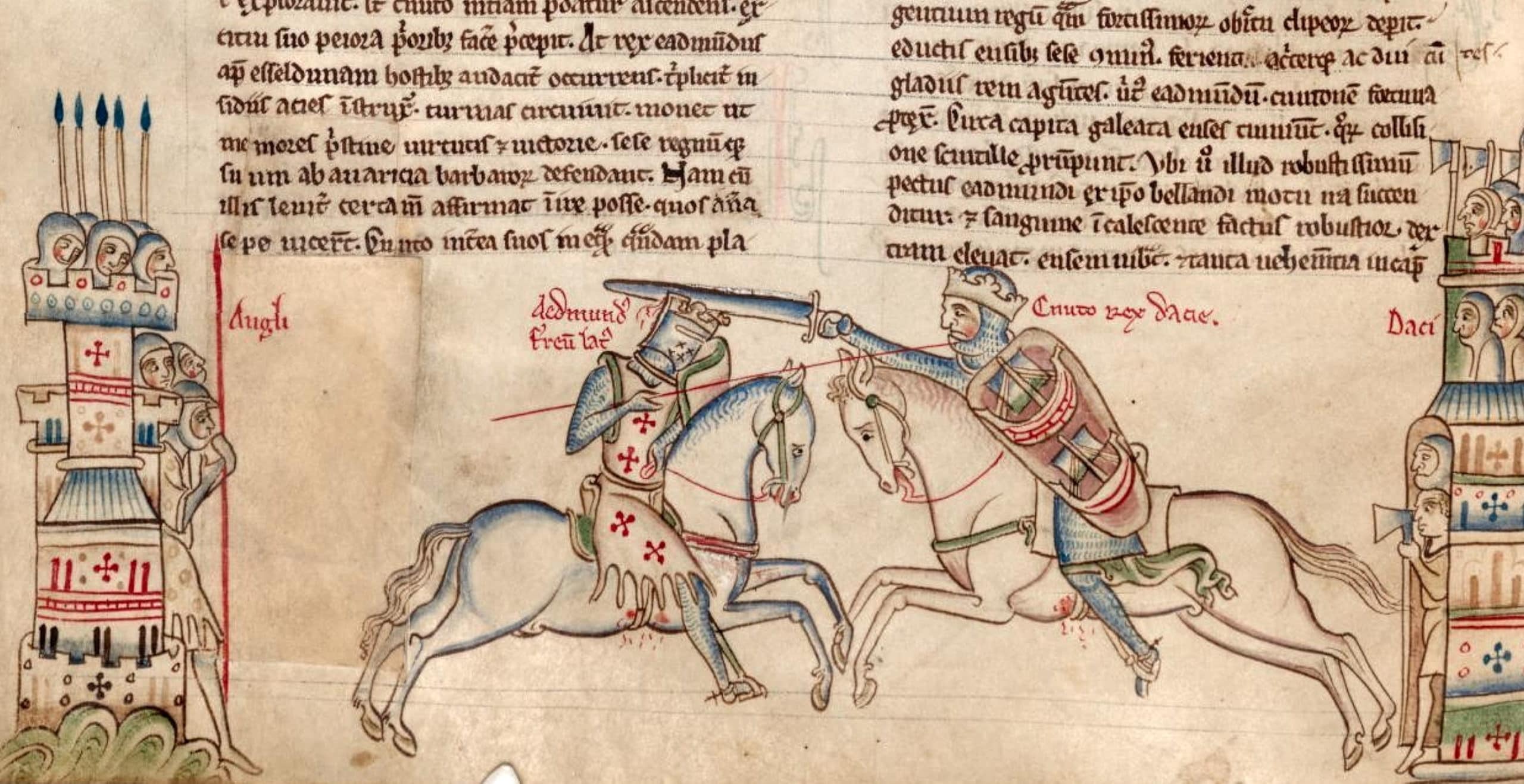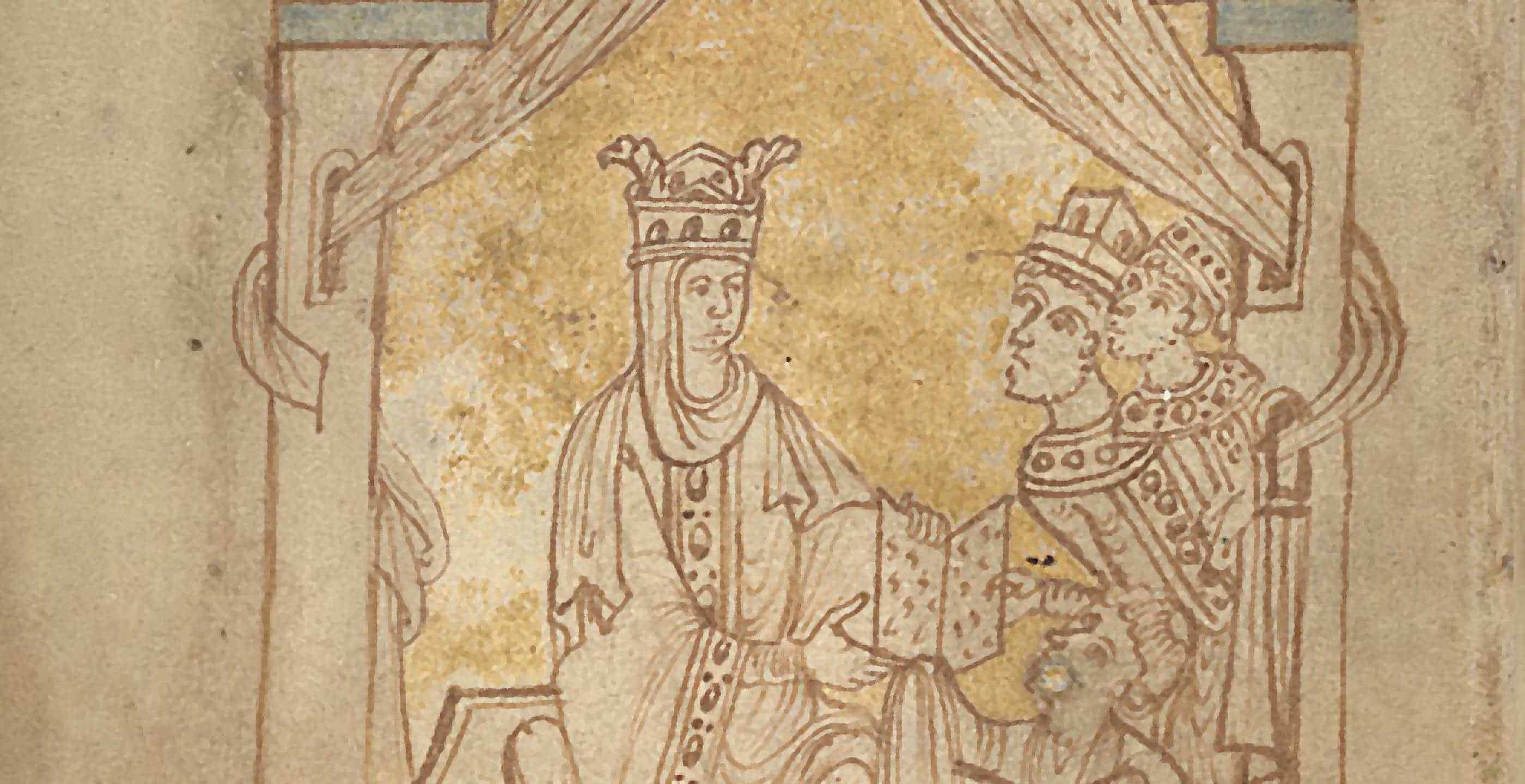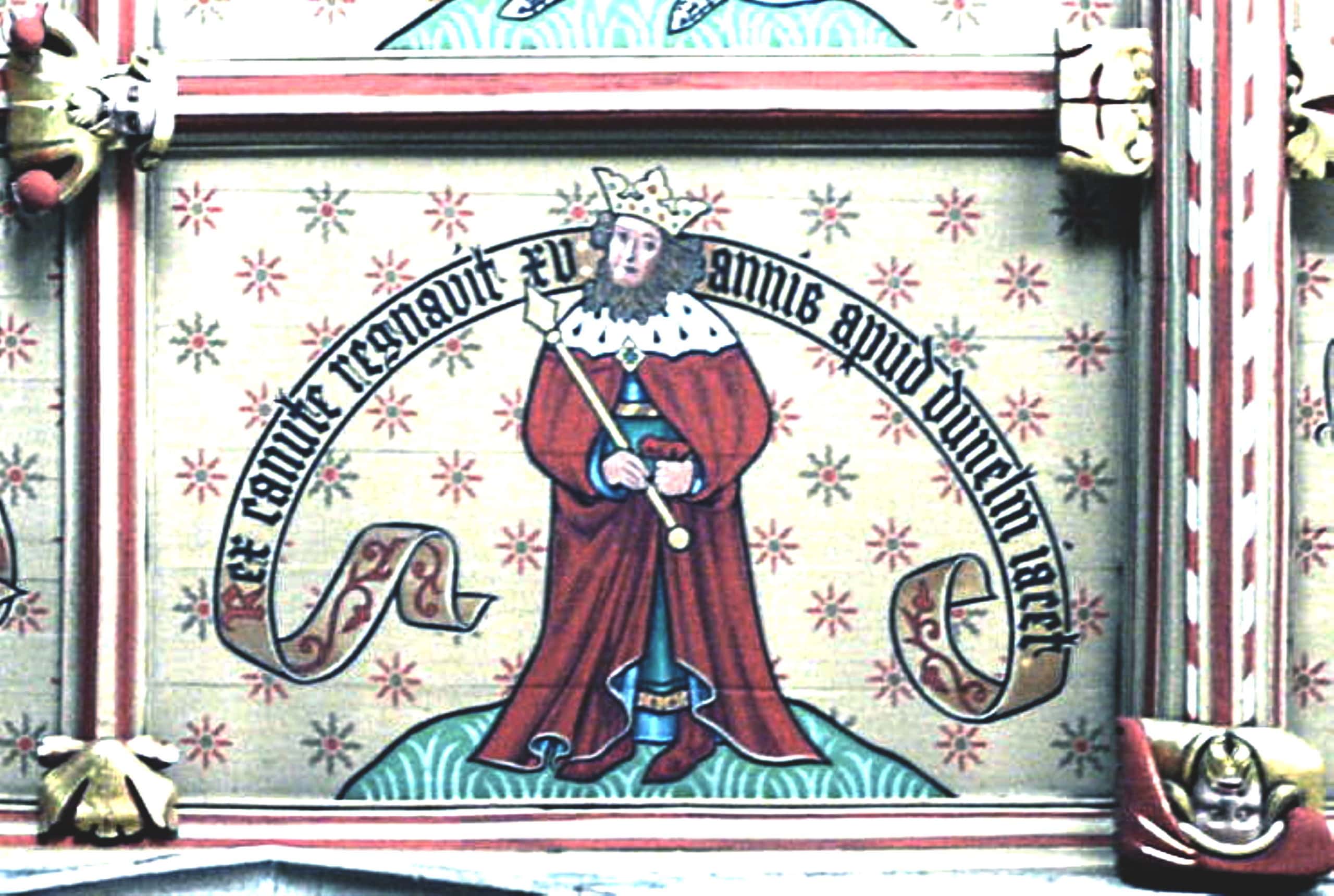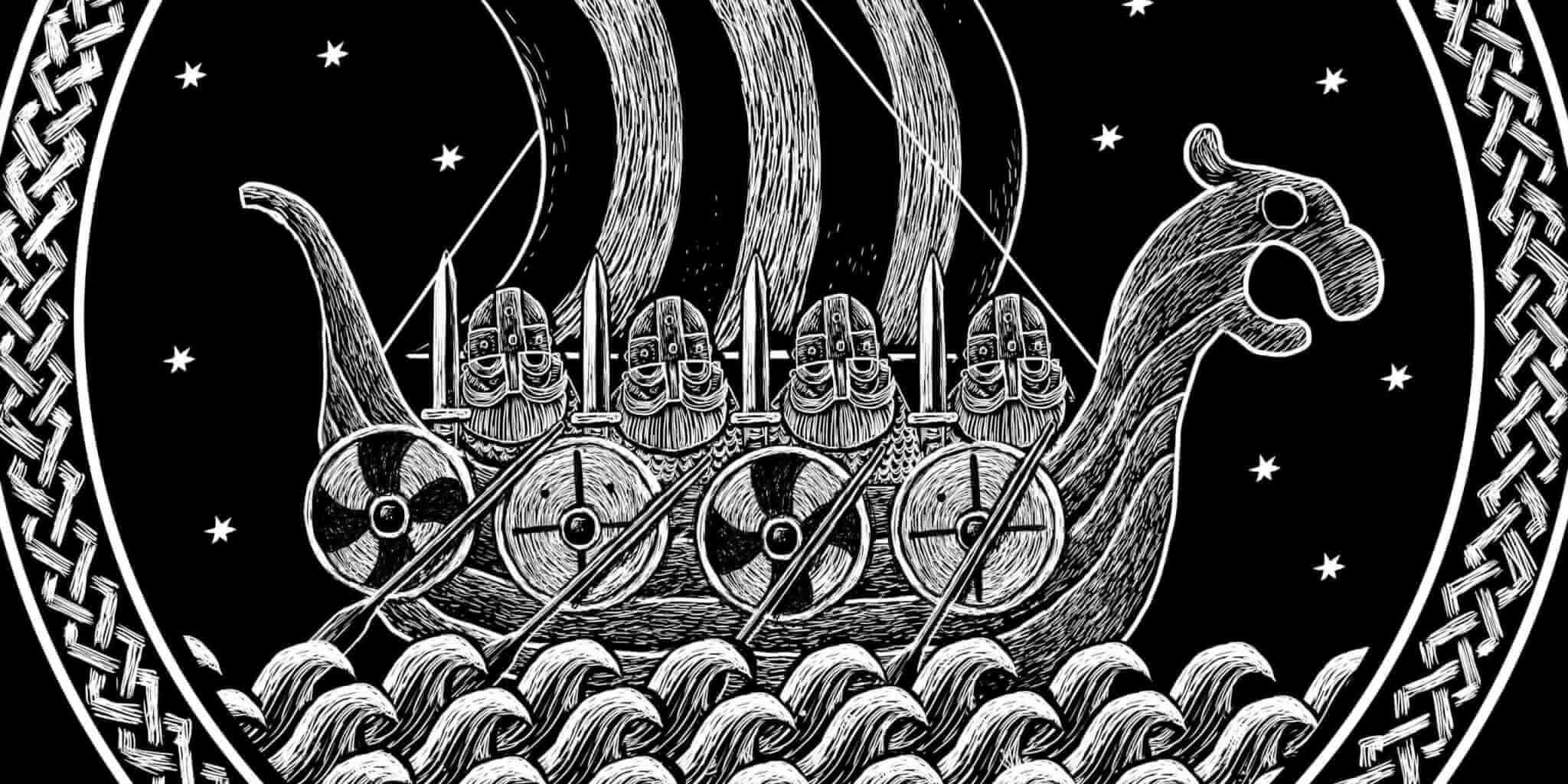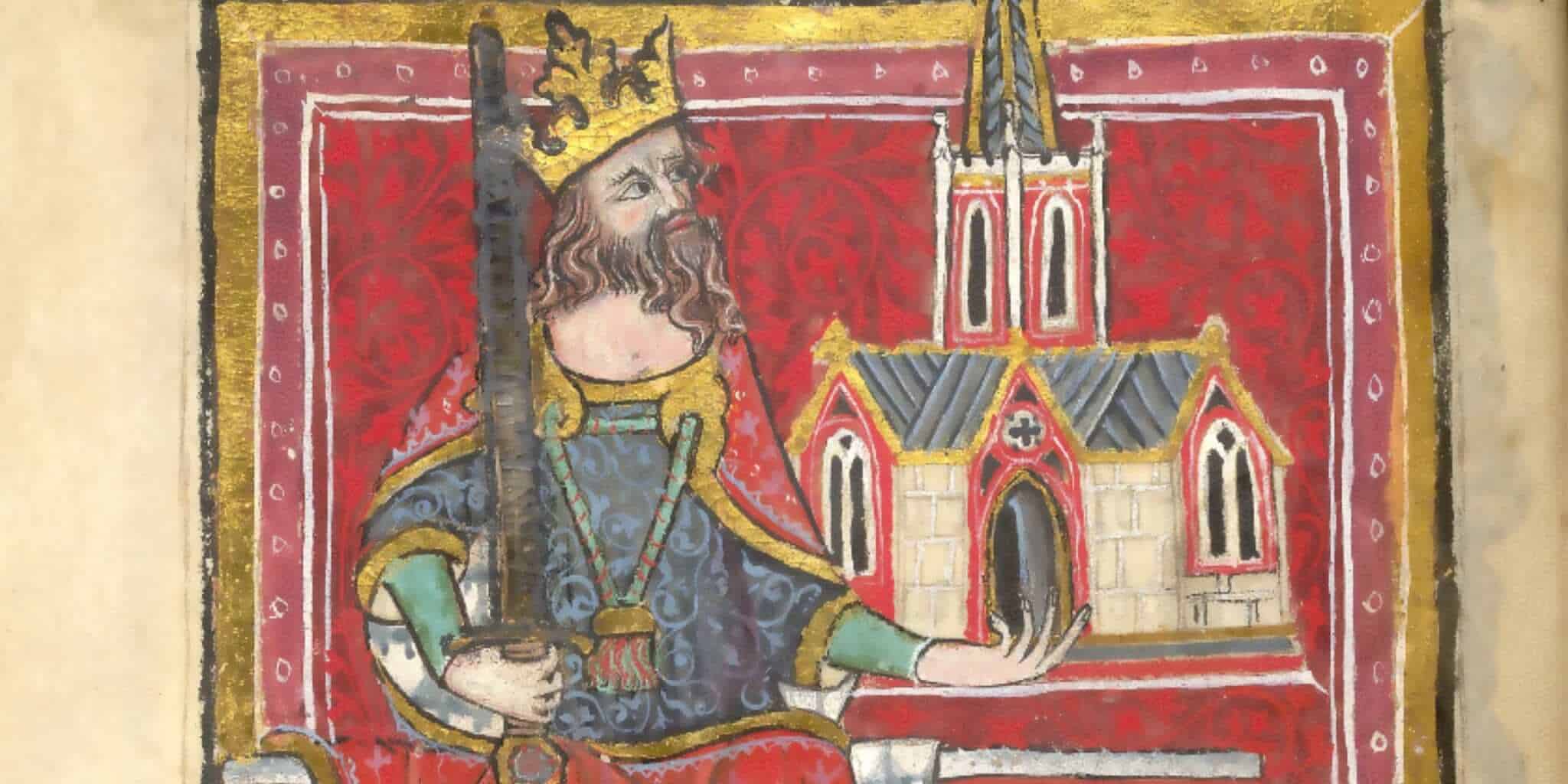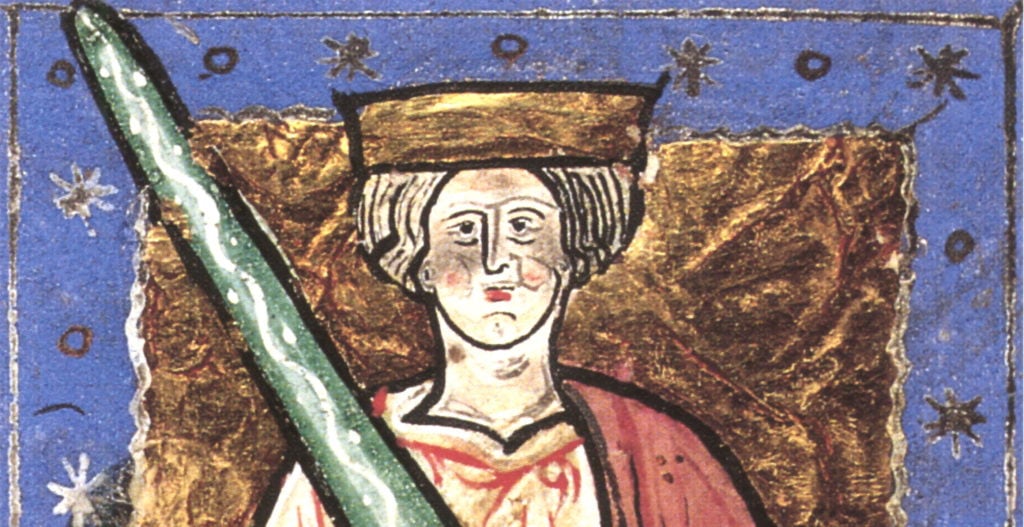Edmund Ironside, the son of Aethelred the Unready, found himself at the forefront of Anglo-Saxon resistance to the incoming threats from the Vikings led by the famous and powerful King Cnut.
Edmund was born to the King of England, Aethelred the Unready and his first wife, Aelgifu. He had several siblings including two older brothers and three younger ones, as well as four sisters.
When Aethelred went on to his second marriage with Emma of Normandy, he had two more sons, Edmund’s half-brothers, Alfred and Edward the Confessor.
When his elder brothers Athelstan and Egbert passed away, he was left as the next in line and thus future heir to his father’s throne.
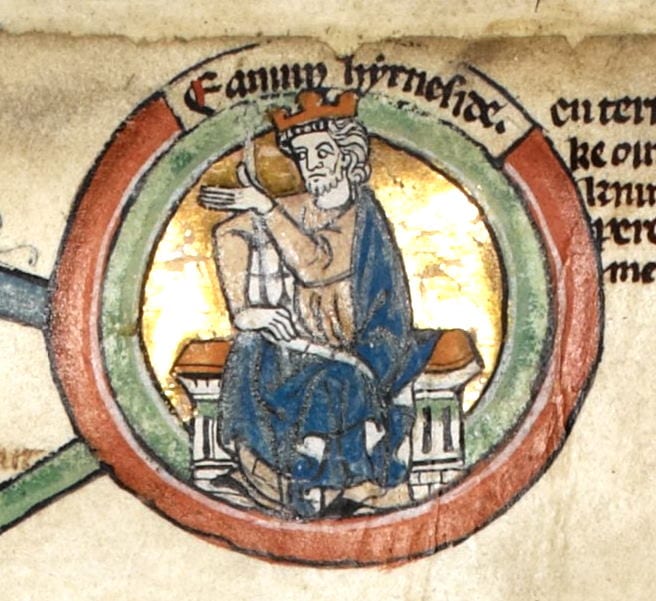
Immediately, young Edmund appeared to be a very different character to his father whose reign was characterised by his lack of leadership skills.
Any perceived weakness in leadership could easily be exploited by the Vikings who were showing increasing interest in conquering England.
In 1013, such an event took place under the leadership of Viking king Sweyn Forkbeard (Cnut’s father) who managed to seize the throne from the Anglo-Saxons and force Aethelred to flee to safety in Normandy.
Meanwhile, Edmund’s older brother passed away in June 1014 leaving Edmund at the helm. When he died, his brother gave him the sword which had been in the possession of King Offa of Mercia, a symbol of Edmund’s rise in status.
Back in the Viking camp, events were also playing out which shifted the balance of power.
In the same year that Athelstan passed away, the Viking king Sweyn Forkbeard also died, leaving Cnut to inherit his English conquests.
Whilst the Five Boroughs accepted Cnut as king, Aethelred saw his opportunity to return to England and reclaim his throne, which he did and with surprisingly successful results, albeit short-term.
With Aethelred launching his surprise attack on the Vikings, Cnut decided to return to Denmark in order to bide more time and amass his troops to relaunch his own large-scale invasion.
Meanwhile, Aethelred returned with vengeance in mind, attacking all those who had acquiesced to Viking power. Whilst some pleaded for royal pardons in vain, Aethelred ravaged the Danelaw and punished all those who had expressed support for Sweyn and Cnut.
This included Sigeferth and Morcar, brothers who were described in the Anglo-Saxon Chronicle as “chief thegn of the Seven Burghs”. As noble leaders of the seven burghs of Derby, Leicester, Lincoln, Nottingham, Stamford as well as Torksey and York, their powerbase was extensive as it occupied the prime locations in the northern half of the Danelaw.
When the brothers arrived at an assembly in Oxford, hoping for a pardon they were brutally murdered by Eadric Streona on the orders of King Aethelred.
Furthermore, the king then seized all of their lands and imprisoned Sigeferth’s widow at Malmesbury Abbey.
It was at this point, that Edmund chose to intervene by seizing the widow and marrying her instead.
Such dissent against his father not only reflected the personal schism in their family relations but also reflected Edmund’s desire to rule.
After marrying his widow bride, he consolidated his newly acquired power, redistributed lands and became the ruler of the Danelaw.
With Aethelred and Edmund Ironside now engaged in a power struggle, Cnut chose the perfect timing in which to launch his raid on England.
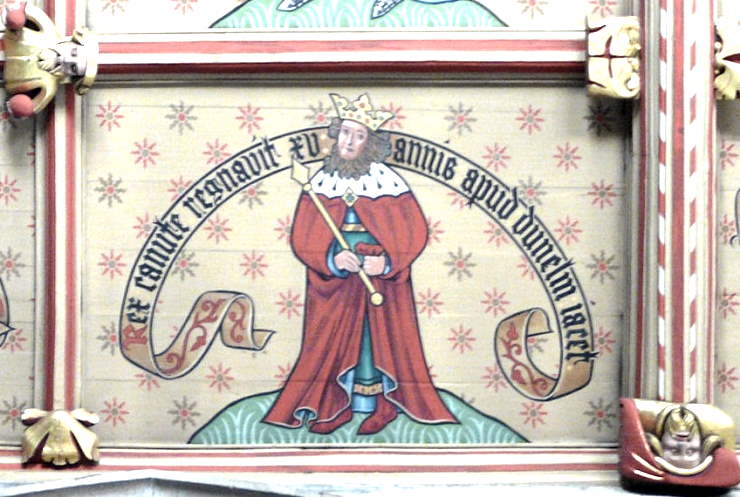
In August 1015, Cnut and his newly amassed fleet returned to England and for the next few months made significant progress.
It soon became clear that it would fall on Edmund to put up the strongest resistance to the Viking invasion and he quickly raised an army.
Unfortunately, the Mercians under the leadership of Eadric Streona as well as the West Saxons had already given into Cnut’s invasion.
Despite Edmund’s great efforts, the army he amassed quickly fragmented when a distinct lack of leadership from his father sowed divisions.
In response, Edmund quickly put together a new army and attacked all those who had submitted to Cnut and his men, including Streona’s Mercian forces.
Significantly, in the midst of the fighting, King Aethelred died on 23rd April 1016 leaving the fate of the kingdom in Edmund’s hands. Whilst the general public and councillors agreed Edmund would become the next king, the remaining members of the Witan had nominated Cnut.
It appeared that only force could break this deadlock and thus Edmund rallied his troops.
With Cnut gaining ground, Edmund displayed his bravery and leadership when he travelled to London and broke the siege inflicted by the Danish troops.
Further skirmishes between forces did not produce a decisive outcome.
All rivalries however would come to a head at the Battle of Assandun on 18th October 1016 where Edmund’s Saxon forces met Cnut’s Viking army in a fight that would decide the fate of the next king.
Sadly for Edmund, despite his valiant efforts, treachery in the form of Eadric Streona sealed the English forces fate against Cnut and his victorious army.
During the battle, Streona, who had defected once to Cnut and then returned to the English side, ultimately showed his duplicitous nature once more when he abandoned the conflict, allowing Cnut’s men to break through English defences.
With Cnut’s victory now secure, one last meeting in Glouestershire between Edmund and Cnut concluded the rivalry of their forefathers.
In their meeting, it was said that Edmund challenged Cnut to single combat, however the Danish king offered him a compromise instead.
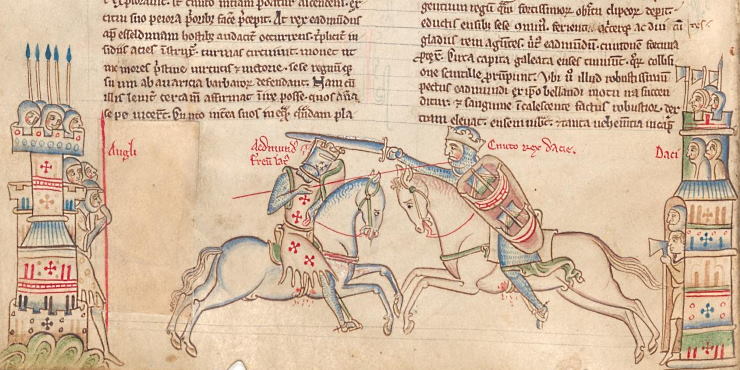
Such an agreement involved the partitioning of land in England, allowing Edmund to retain Wessex whilst Cnut had the rest of the territory.
Another element to this treaty also included the caveat that when the first of them was to die, the survivor would inherit the entire kingdom.
With the treaty successfully brokered between the Saxon and Viking kings, it did not take long for the clauses in the agreement to take effect.
By the end of the year, in November 1016 Edmund Ironside passed away, forcing the Saxon kingship to cede control to the new Viking King of England, Cnut the Great.
With no one standing his way, King Cnut assumed his succession rights as had been agreed by the treaty and Edmund’s two sons found themselves consigned to the safety of European relatives in Eastern Europe.
Edmund had put up a great fight for the Saxon cause (earning him the name Ironside for his efforts), however in the end it did not prove to be good enough. The Vikings were in power but how long would it last, only time would tell…
Jessica Brain is a freelance writer specialising in history. Based in Kent and a lover of all things historical.
Published: 2nd September 2022
